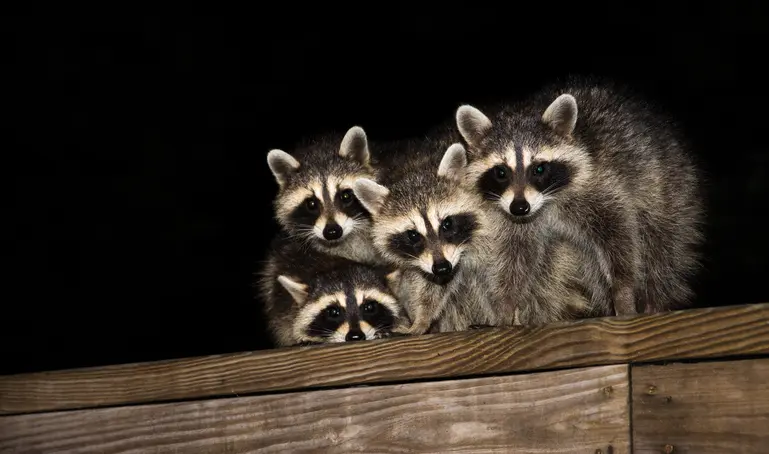Raccoons are mysterious animals that have fascinated and puzzled people for a long time. With their unique masks and quick paws, these animals have made a place for themselves in our cities. Even though raccoons are very common, there are still a lot of unknowns about their biology. In this blog post, we’ll take off the raccoon’s mask and explore the fascinating world of raccoon biology.
How a raccoon’s body works: the basics
Scientists call raccoons Procyon lotor. They are medium-sized animals known for how well they can adapt. Here are some important facts and details about the body:
The Mask: Raccoons have a black pattern around their eyes that looks like a mask. This is how they got the name “masked bandits.” This mask might help cut down on the glare from lights and make it easier to hunt at night.
Paws: Their front paws are so agile that they almost look like human hands. They can move things around, open packages, and even turn doorknobs with these strong hands.
Tail Rings: Raccoons’ long tails have five to seven black and brown rings that go around in a circle. The amount of rings can be different, but this is a feature that makes raccoons stand out.
Raccoons weigh between 10 and 30 pounds as adults, with males being bigger than females. If you count their tails, they are about 2 to 3 feet long.
Nighttime Hunters
Raccoons are mostly nocturnal, which means they do most of their things at night. They are good at finding food at night because they can see well in the dark, smell well, and hear very well. Raccoons are opportunistic omnivores, which means they will eat almost anything, from fruits, nuts, and insects to small animals and even trash.
Adaptability and Living in the City
The fact that raccoons can live in cities is one of the most interesting things about their genetics. Raccoons are often seen in residential areas because they can find plenty of food and protection in cities and suburbs. They know how to climb well, so they can get into attics, stairs, and even trash cans. Their ability to do well in a wide range of climates, from the coldest places in the north to the hottest places in the south, shows how well they can change.
Family life and having children
Raccoons spend most of the year alone, but when it’s time for them to mate, they get together. Most matings happen between January and March, and the pregnancy lasts about 63 days. In the spring, female raccoons have a group of two to five kits.
A mother raccoon is very protective of her young and will keep them in a den for about two to three months. During this time, she teaches them the skills they need to stay alive. By late summer or early fall, the kits are old enough to eat on their own and start to explore.
How We Talk and What We Hear
Raccoons are not known for being talkative, but they do use different sounds to talk to each other. There are hisses, growls, chitters, and purrs among these sounds. When a mother raccoon wants to talk to her young, she makes a high-pitched chattering sound. When an adult raccoon feels attacked, it may make a warning growl.
Raccoons in Our Neighbourhood:
Understanding raccoon biology helps us learn more about these interesting and flexible animals that live in our cities. Even though raccoons can sometimes get into fights with people because they are smart and persistent, it’s important to remember that they are wild animals and play an important part in our ecosystem.
When you have raccoons on your land, it’s important to get rid of them in a humane and responsible way. If you have a problem with a rat, you might want to hire a professional wildlife removal service. We can live more peacefully with these animals that live in cities if we accept their biology and the way they live.
Guaranteed raccoon removal services in Cobourg utilizing proven and successful methods. Raccoons are intrusive and destructive wildlife animals that enter your premises in several different ways. We specialize in removing raccoons from main attics, chimneys, decks, and more. Our qualified and insured crew of raccoon control specialists is equipped to remove raccoons and keep them out for good using durable materials.
